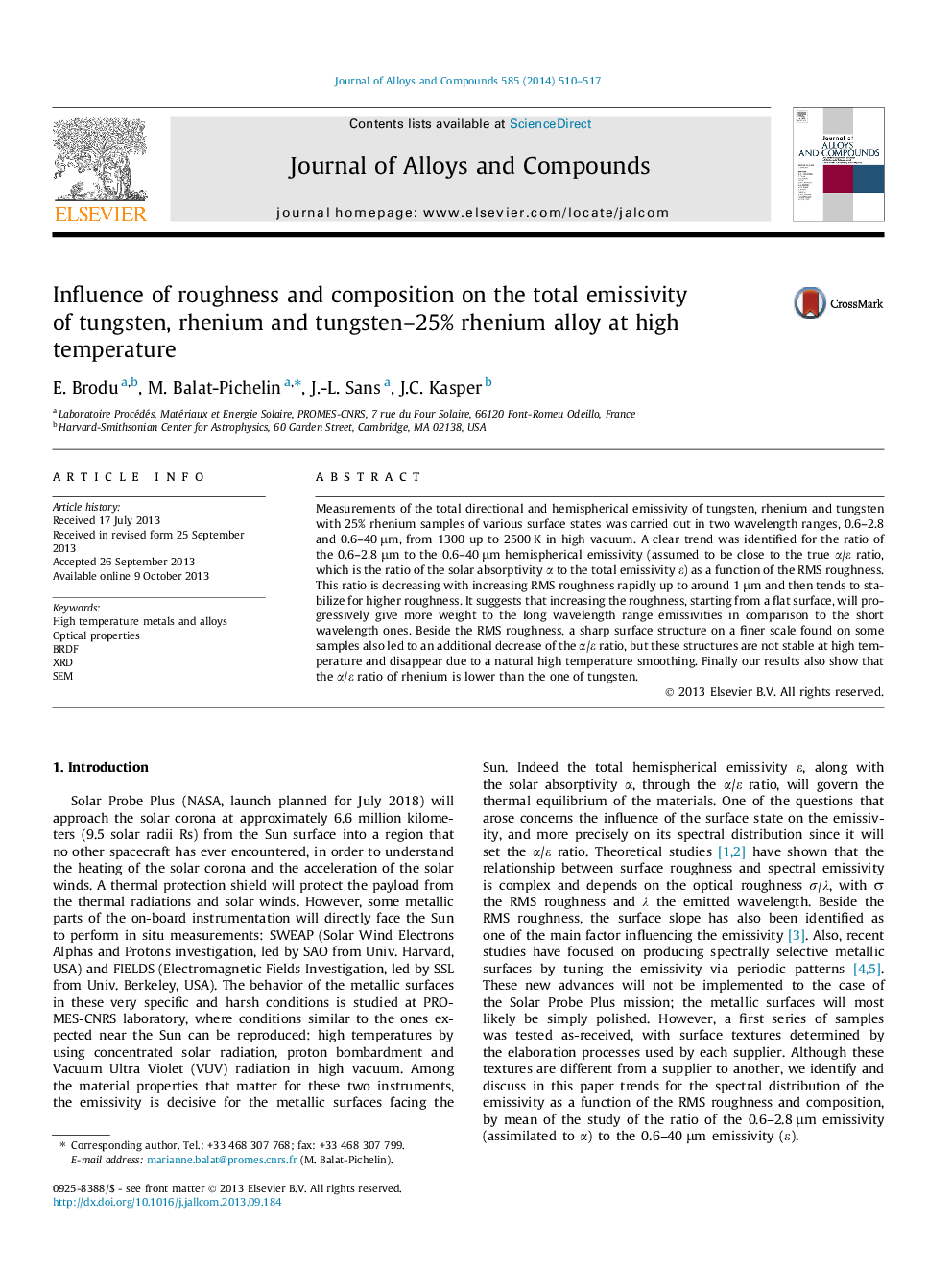| Article ID | Journal | Published Year | Pages | File Type |
|---|---|---|---|---|
| 1613012 | Journal of Alloys and Compounds | 2014 | 8 Pages |
•Measurement of the emissivity of W, Re and W–25% Re up to 2500 K is performed.•A natural smoothing of the surfaces at high temperature reduces the emissivity.•The α/ε ratio is function of the roughness and decreases with increasing roughness.•A sharp surface structure provides an additional decrease of the α/ε ratio.•Finally, the α/ε ratio of Re is found to be lower than the W one.
Measurements of the total directional and hemispherical emissivity of tungsten, rhenium and tungsten with 25% rhenium samples of various surface states was carried out in two wavelength ranges, 0.6–2.8 and 0.6–40 μm, from 1300 up to 2500 K in high vacuum. A clear trend was identified for the ratio of the 0.6–2.8 μm to the 0.6–40 μm hemispherical emissivity (assumed to be close to the true α/ε ratio, which is the ratio of the solar absorptivity α to the total emissivity ε) as a function of the RMS roughness. This ratio is decreasing with increasing RMS roughness rapidly up to around 1 μm and then tends to stabilize for higher roughness. It suggests that increasing the roughness, starting from a flat surface, will progressively give more weight to the long wavelength range emissivities in comparison to the short wavelength ones. Beside the RMS roughness, a sharp surface structure on a finer scale found on some samples also led to an additional decrease of the α/ε ratio, but these structures are not stable at high temperature and disappear due to a natural high temperature smoothing. Finally our results also show that the α/ε ratio of rhenium is lower than the one of tungsten.
Graphical abstractPicture of the MEDIASE facility at the focus of the 1 MW solar furnace in Odeillo, France.Figure optionsDownload full-size imageDownload as PowerPoint slide
